looks like a cherry to me jan...lovelyWe have the first of the fruit trees from the orchard in blossom (think it might be cherry)
View attachment 200149
lyn
looks like a cherry to me jan...lovelyWe have the first of the fruit trees from the orchard in blossom (think it might be cherry)
View attachment 200149
thats good news indeed jan...Update on the Fields.
The cricket team who were trying to lrase the field seem to have settled elsewhere. So it looks as if our Fields are safe - for now.
The Football team who use the football pitch are trying to get a further pitch marked. The Friends Group are happy with that as it doesn't involve any fencing off.
So good news so far.
how wonderful jan..keep up the good workMore good news - I bumped into our local wildflower/insect expert on the fields today.
He was clearing brambles to allow a patch of nettles to flourish for butterflies.
He then went to clear grass from around a buckthorn shrub - favoured food of the Brimstone butterfly. While he was doing that a female Brimstone arrived and laid 3 eggs.
He also told me he had seen a Painted Lady and 2 Red Admirals - he suspected these were migrants as smaller that those usually seen
So it looks as if our wildflower planting is paying off.
UpdateMore good news - I bumped into our local wildflower/insect expert on the fields today.
He was clearing brambles to allow a patch of nettles to flourish for butterflies.
He then went to clear grass from around a buckthorn shrub - favoured food of the Brimstone butterfly. While he was doing that a female Brimstone arrived and laid 3 eggs.
He also told me he had seen a Painted Lady and 2 Red Admirals - he suspected these were migrants as smaller that those usually seen
So it looks as if our wildflower planting is paying off.
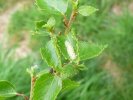
this is what i found mort...no mention of being white in colourLooks like a ladybird lava to me Janice
Update from our expert.Looks like a ladybird lava to me Janice
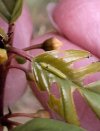
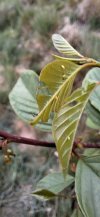
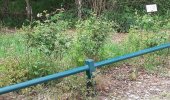
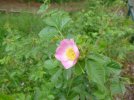
lovely jan ...well done to all..Two years ago acting on the advice of the Park Ranger assigned to the Fields (nw noo longer available because of cutbacks) we planted a hedge of Wild Roses. This was next to a low fence at the one side of the car park.
Not a lot happened last year although they seems to be growing. So we pruned them, made sure they were watered regularly (if necessary), talked to them.
This year most of them have grown really well and started to bush out.
View attachment 202203
This is the site that greeted me this morning. Other buds showing colour and plenty of buds forming. Well worth the effort and wait.
View attachment 202197
We are trying to only plant native speciesAnd native to Britain !
thats great jan all looking goodFollowing the pruning shown in post #186 I checked the prchard this morning. Plenty of fruit forming.
apples
View attachment 202845
plum or greengage
View attachment 202849
Perhaps someone can tell me if this is Pear or not?
View attachment 202847
Perhaps someone can tell me if this is Pear or not?
View attachment 202847
